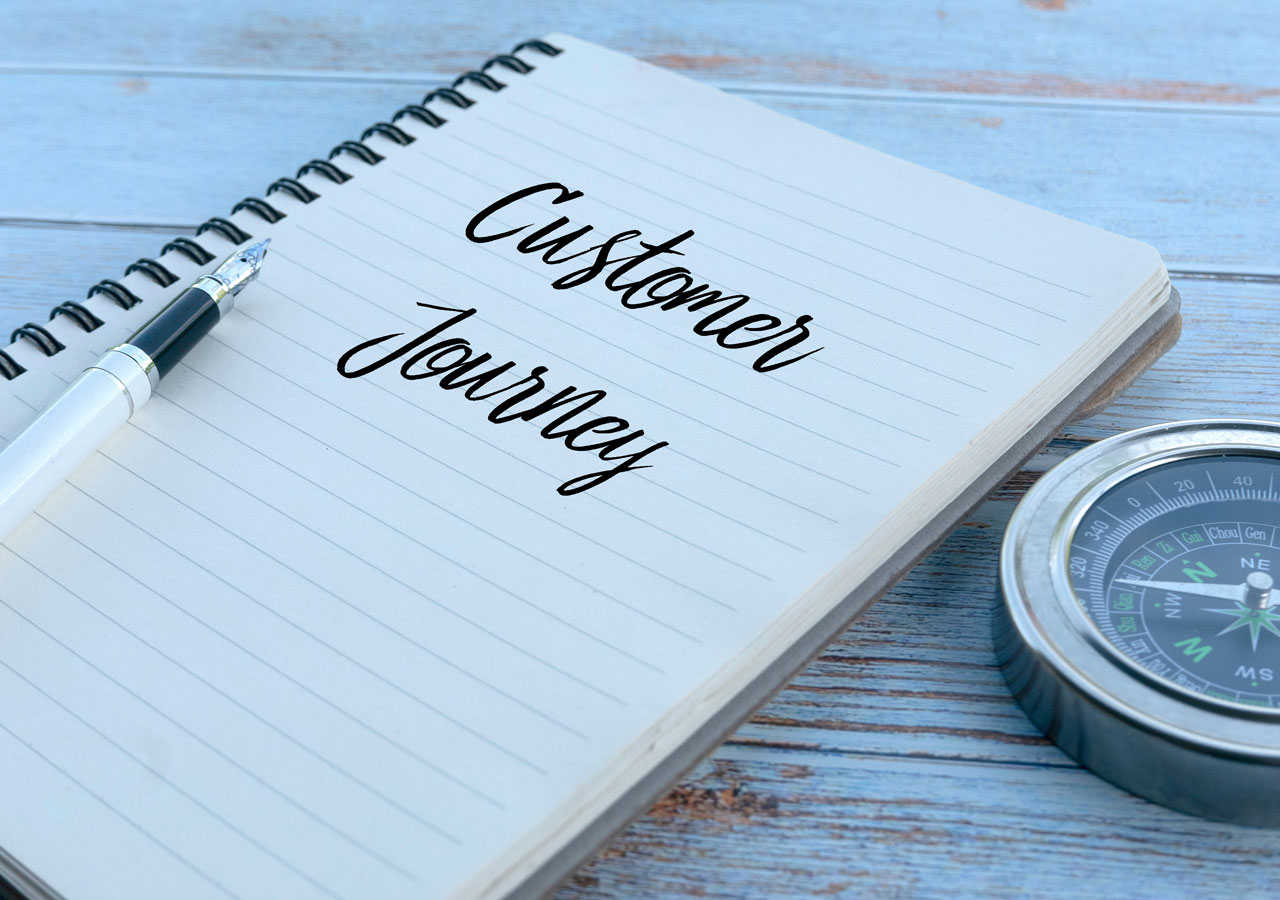How to create an effective Customer Journey Map?
Customer journeys are becoming increasingly important for businesses. They provide a way to measure the success of marketing campaigns and identify areas where improvements can be made.
A customer journey map helps companies understand their customers’ buying behavior and provides insights into why they choose certain brands over others. This information can then be used to improve future marketing strategies.
A customer journey map is a visual representation that shows how a customer goes through different stages in his or her purchase process. It’s also known as a buyer journey, customer path, or customer journey map.
The steps involved in creating a customer journey map include:
1. Defining your business goals
2. Identifying your target audience
3. Understanding your current marketing strategy
4. Creating personas
5. Analyzing data
6. Developing content
7. Planning
8. Testing
9. Launching
10. Measuring results
11. Improving
12. Iterating
13. Building brand loyalty
14. Continual improvement
15. Maintaining
16. Evaluating
17. Refining
What is a customer journey map?
A customer journey map (also called a buyer journey) is a visual representation of a customer’s journey from awareness of your product or service to purchasing it.
It includes all the touchpoints along this journey, including website visits, social media interactions, email communications, phone calls, physical store visits, etc.
It consists of two parts:
• The first part represents the customer’s experience with your company before he or she makes any purchases. This may include researching your products online, visiting your physical location, reading reviews about you on review sites, listening to podcasts about your industry, watching videos about your industry, and so on.
• The second part represents the customer‘s experience after he or she has purchased your product or service. This may include receiving an invoice, making a payment, downloading a software update, getting support, using your product, and so on.
Why do I need a customer journey map? What benefits does it bring?
Creating a customer journey map helps you analyze your existing marketing efforts. You can use it to evaluate whether your marketing activities are working effectively.
You can also use it to find out what kind of messages resonate best with your target audience. For example, if you know that people who live near a beach tend to buy more expensive items than those living elsewhere, you might want to focus more heavily on selling beach-related products.
In addition, a customer journey map will help you plan future marketing initiatives. For instance, if you notice that most of your sales come from people who have visited your website but haven’t yet bought anything, you’ll probably want to invest more time and resources into improving your website design.
Customer journey maps also help you create better customer experiences by providing insight into the problems your customers face during each step of the buying process.
For example, if you notice that many of your customers don’t complete their purchase until they receive your invoices, you’ll probably want improve your communication methods so that you’re able to send them reminders for payments.
How to create a customer journey map? How long should my customer journey map be?
There is no standard length for a customer journey map. Some companies make one for every campaign while others make one for every major project. However, it’s usually recommended to keep your customer journeys under 20 pages.
If you feel like you need more space, consider breaking down your customer journey map into smaller sections.
What tools do I need to create a customer journey mapping?
A customer journey map typically requires the following types of information:
• Website analytics data – such as traffic volume, conversion rate, bounce rate, average order value, number of page views per visit, and so on. It’s important to note that not all websites provide detailed visitor stats. In these cases, you’ll need to collect this information manually.
• Email data – such as the total number of emails sent, the percentage of recipients who opened the email, and so on. Again, some businesses don’t offer detailed email statistics. In these cases, it’s up to you to collect this data manually.
• Sales data – such as the number of orders placed, the number of repeat buyers, and so on. If you sell only digital products, you won’t need to track sales numbers.
• Social media data – such as the amount of likes/shares/comments received, the number of followers, and so on. This type of data is especially useful when you’re trying to understand how well social media campaigns are performing.
• Other data – such as the names of competitors or other organizations in your industry, the names of your employees, and so on.
The good news is that there are several free online tools available that can help you gather all of the abovementioned data. These include Google Analytics, Hubspot, Marketo, and MailChimp.
How much does it cost to create a customer journey?
Creating a customer journey map doesn’t require any special skills. However, it does take time and effort. Depending on the size of your business, creating a customer journey map could take anywhere between 2 hours and 3 months.
This means that you’ll either need to hire someone with specialized knowledge or spend a significant portion of your budget on software development.
In both cases, you’ll have to pay a monthly fee. The price depends on the complexity of your customer journey map. A basic version will cost around $50 – $100 per month. More advanced versions may cost hundreds of dollars per month.
How to use a customer journey map? What are its benefits?
Customer journey maps allow you to better understand your customers’ behavior. They also enable you to identify areas where you can improve your marketing efforts.
For instance, let’s say that you noticed that most of your customers didn’t convert until after receiving their invoice. You might then decide to change your invoicing process by offering discounts for early payments.
Another benefit of customer journey maps is that they make it easier to pinpoint problems. When you know exactly what steps your customers are taking before converting, you can easily spot errors and fix them.
You can also use customer journey maps to determine which channels work best for each stage of the buying cycle. For example, if you notice that most of your customers buy from Amazon, but few of them buy from Facebook, you can conclude that Facebook isn’t working as effectively as Amazon.
You can even use customer journey maps to predict future trends. By analyzing historical data, you can see whether certain actions (such as specific discounts) increase conversions.
If you want to learn more about customer journey mapping, check out our guide: How To Use Marketing Automation To Build Better Buyer Personas.
What are the different types of customer journeys?
There are three main types of customer journeys:
• Linear – In this kind of journey, a single step leads directly to another. For example, when you purchase something online, you usually go through multiple pages before reaching the checkout page.
• Multi-step – In multi-step journeys, a series of steps lead to one final destination. For example, when purchasing an item online, you first browse products, then add items to your cart, and finally complete your order.
• Hybrid – In hybrid journeys, there are two or more destinations. For example, in a hybrid journey, you start at home, then visit a local store, and finally return home again.
The type of customer journey you choose depends largely on your business goals. If you’re looking to sell more products, you should focus on linear journeys.
However, if you want to increase customer retention, you should consider multi-step journeys. This way, you can ensure that all stages of the buying cycle are covered.
Conclusion
A customer journey map allows you to track the entire path that your customers take during the sales funnel. It makes it easy to analyze how well your marketing campaigns are performing.
It also helps you to identify weak spots in your conversion rate. Once you’ve identified these issues, you can create new strategies and tactics to address them.
In addition, customer journey maps help you to plan your next marketing campaign. You can use them to find out which channels work best for various stages of the buying cycle.
In short, customer journey maps are invaluable tools for any B2B company. They allow you to better understand your audience, improve your marketing efforts, and grow your business.



0 Comments